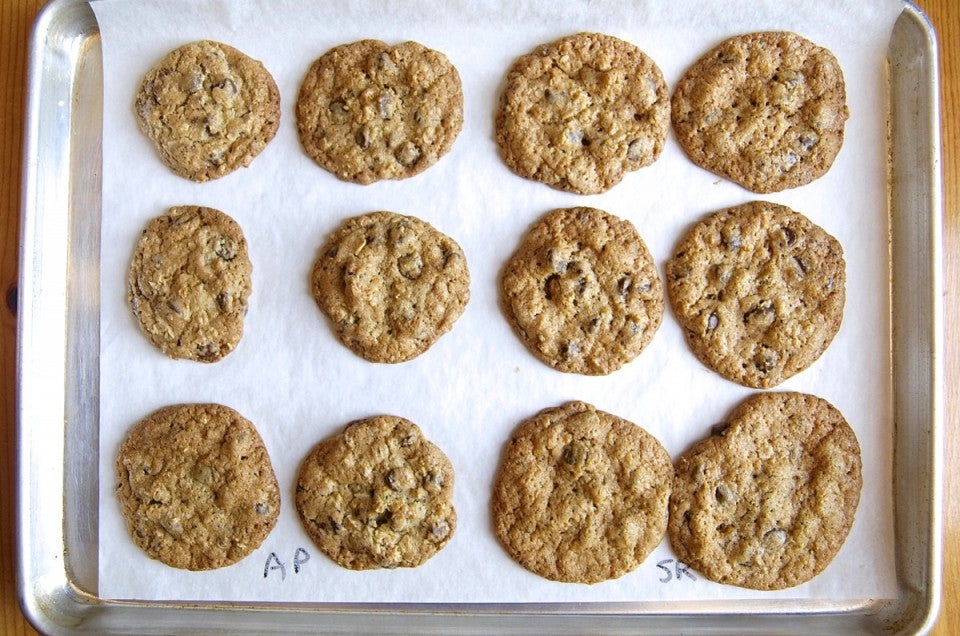


You bought a bag of self-rising flour to make biscuits.
And you made biscuits, and they were superior: moist, tender, high-rising, and REALLY easy.
But you still have most of a bag of self-rising flour left – now what?
Well, there's no need to use that self-rising flour ONLY in recipes calling for it. By using the following guidelines, you can easily substitute self-rising for all-purpose flour in many of your favorite recipes.
Our self-rising flour includes both a concentrated form of baking powder, and salt. Self-rising flour will work just fine in recipes using about 1/2 teaspoon (and up to 1 teaspoon*) baking powder per cup of flour.
*What about recipes using more than 1 teaspoon baking powder per cup of flour? Add enough baking powder on your own to make up the difference.
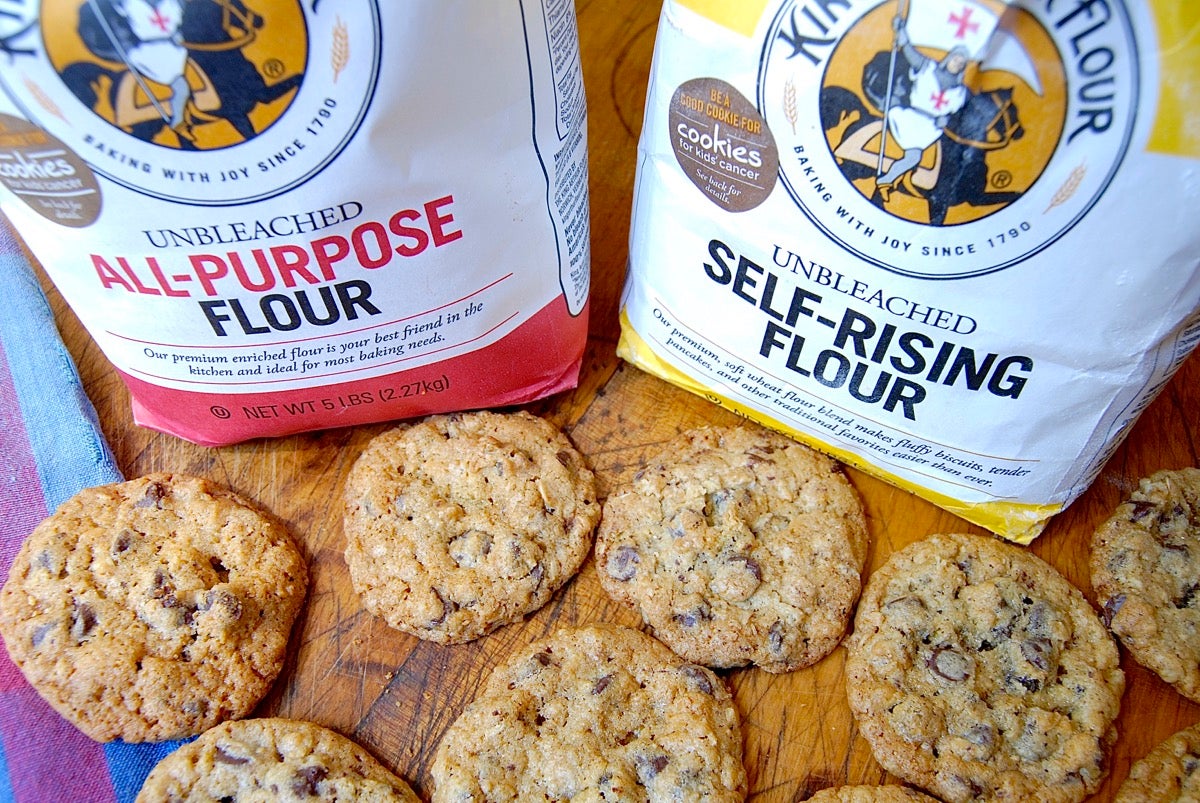
Let's see how these tips translate to real life – starting with a worthy candidate, our 2015 Recipe of the Year: Chocolate Chip Oatmeal Cookies.
Besides including leavening and salt, self-rising flour also differs from all-purpose in its protein level. All-purpose flour's protein is 11.7%; self-rising checks in at 8.5%.
That's quite a difference. How will that translate to cookies? I have my suspicions; let's see how they play out.
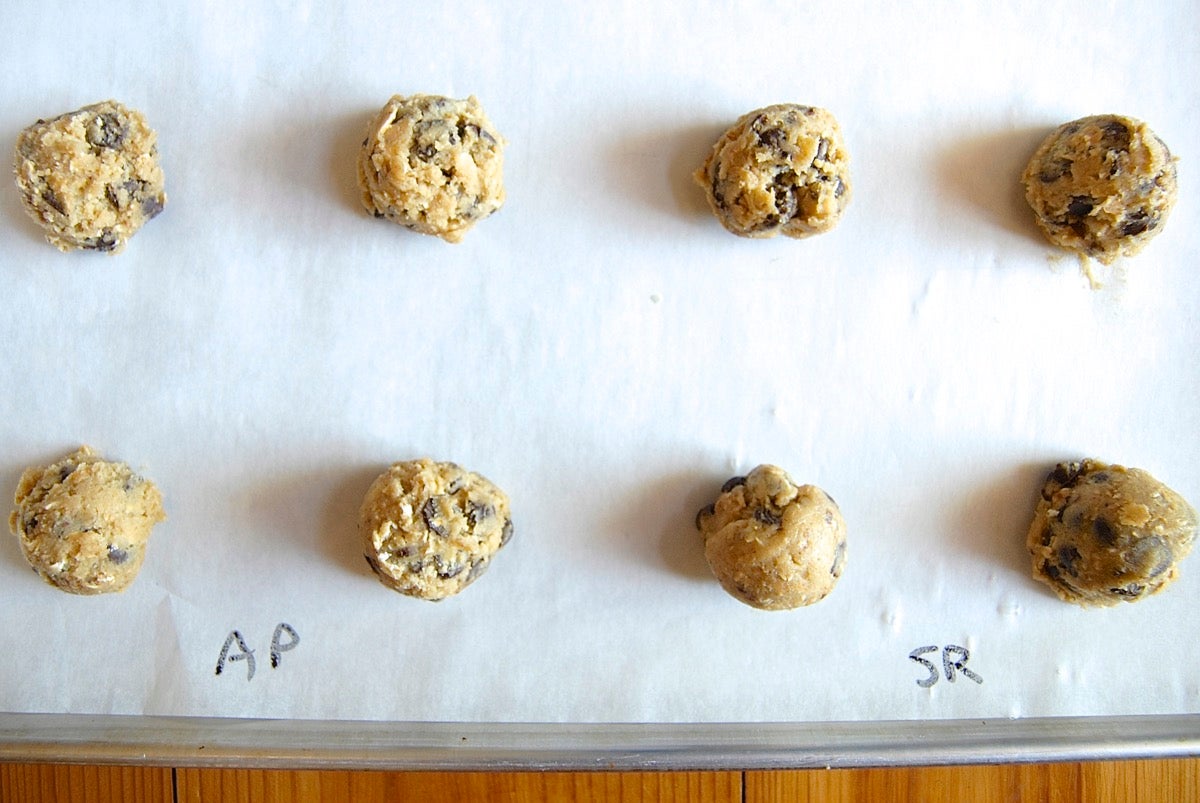
OK, we've got our all-purpose flour dough balls on the left, self-rising on the right. The recipe calls for 1 teaspoon baking powder and 2 cups of all-purpose flour – which meets the criteria of 1/2 teaspoon baking powder per cup of flour.
The dough looks the same for both versions. Let's put these beauties to the test: into the oven they go.
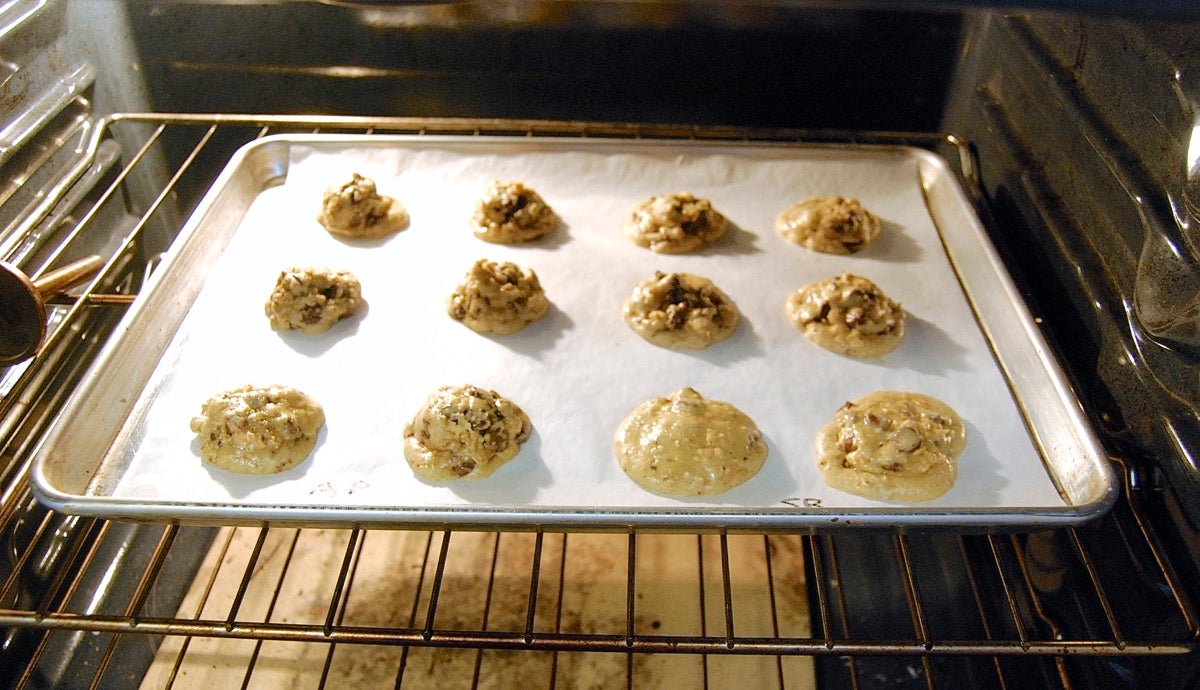
Ah, as I suspected: the self-rising flour cookies (right), with their lower protein, start to spread more quickly than those made with all-purpose flour.
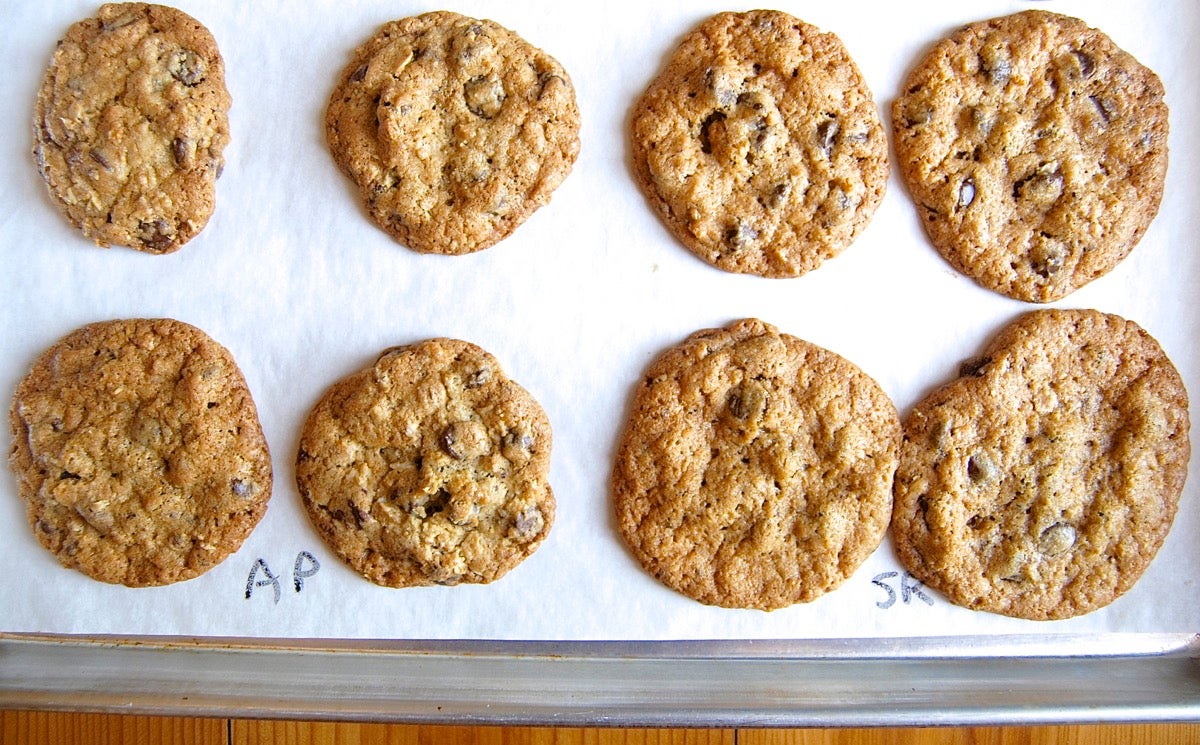
And that quicker spread yields slightly larger, flatter cookies.
What's up with that? Lower protein means less gluten, which translates to less/looser structure: more oven spread.
Not a deal breaker, though. I wouldn't throw those self-rising cookies away – would you?
If you have a cookie recipe that spreads a lot using all-purpose flour, then it's probably not the best idea to substitute self-rising flour. But any cookie with normal spread – one using at least 1/2 teaspoon baking powder per cup of flour – should be just fine.
Chocolate chip oatmeal cookies: check.
Let's try another popular recipe, Banana Bread. The recipe calls for 1 teaspoon baking powder and 2 1/4 cups of all-purpose flour.
Uh-oh – that's not "at least 1/2 teaspoon baking powder per cup of flour." But rules are made to be tested, and it's close; let's see what happens.
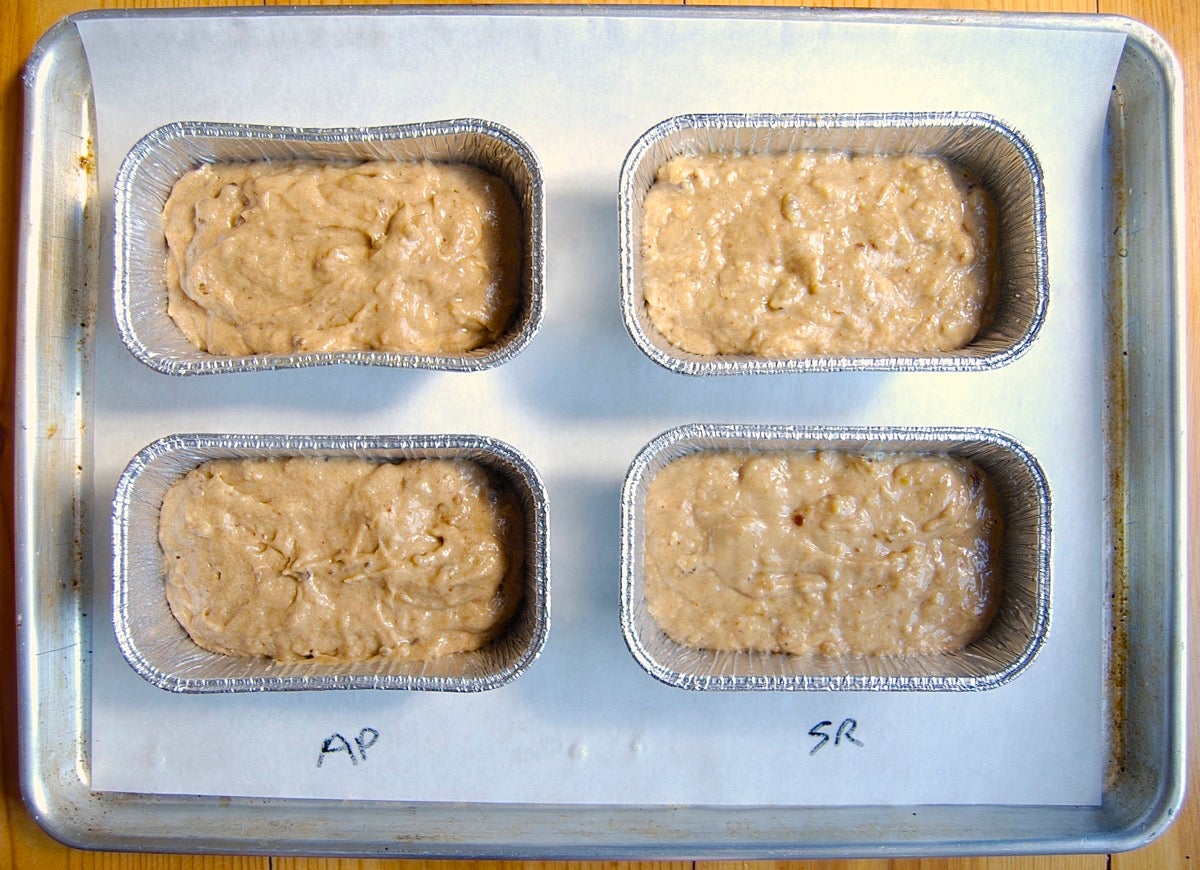
The batter made with self-rising flour is just slightly thinner. Again, that's a reflection of self-rising's lower protein level.
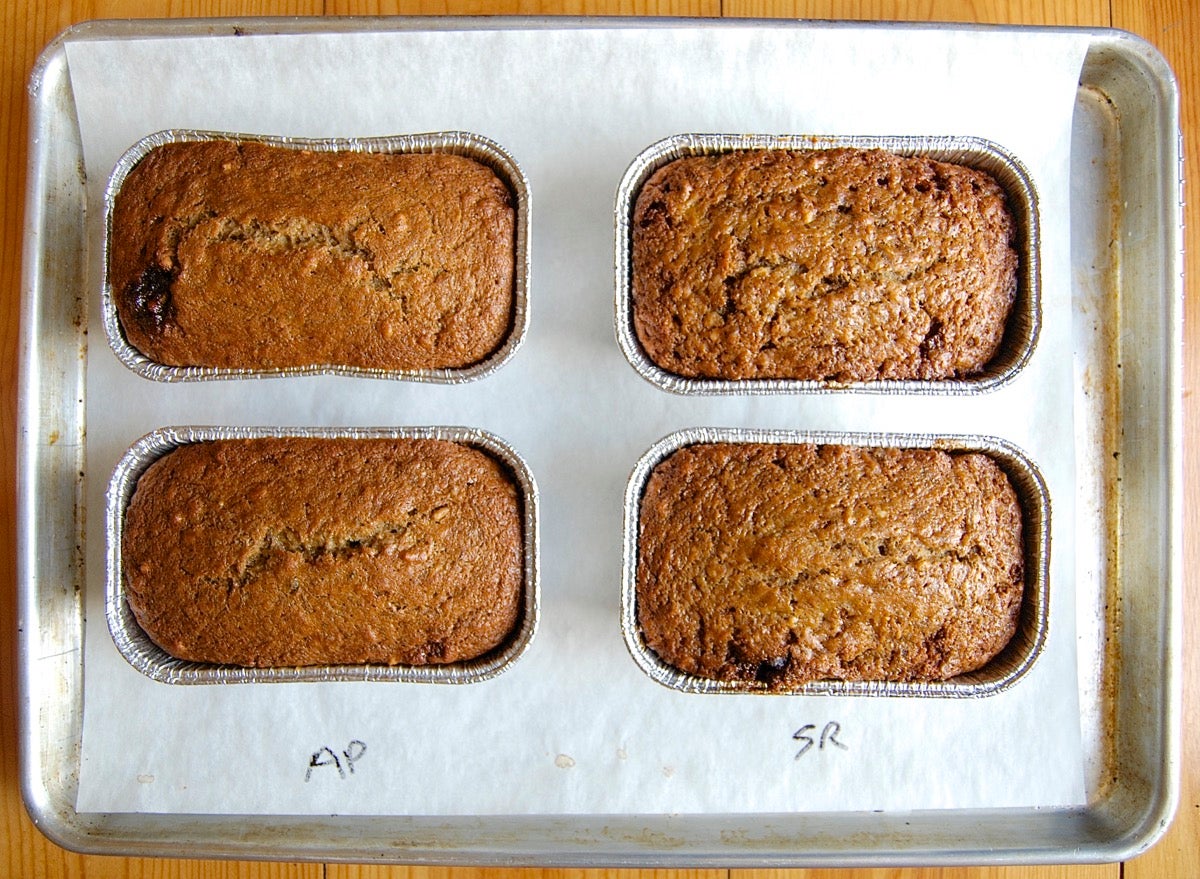
Still, both breads rise and bake up similarly.
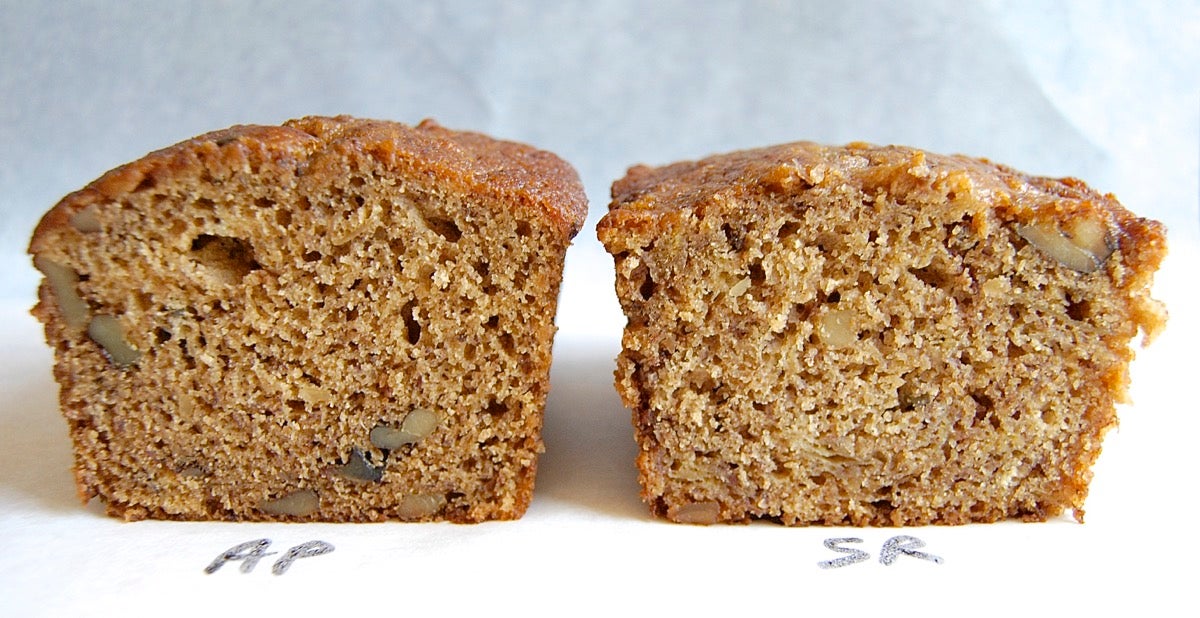
Maybe the self-rising flour bread is a tiny bit flatter across the top? But without a side-by-side comparison, you'd never know.
Banana bread: check.
Finally, let's try one of my favorite cake recipes, Lazy Daisy Cake.
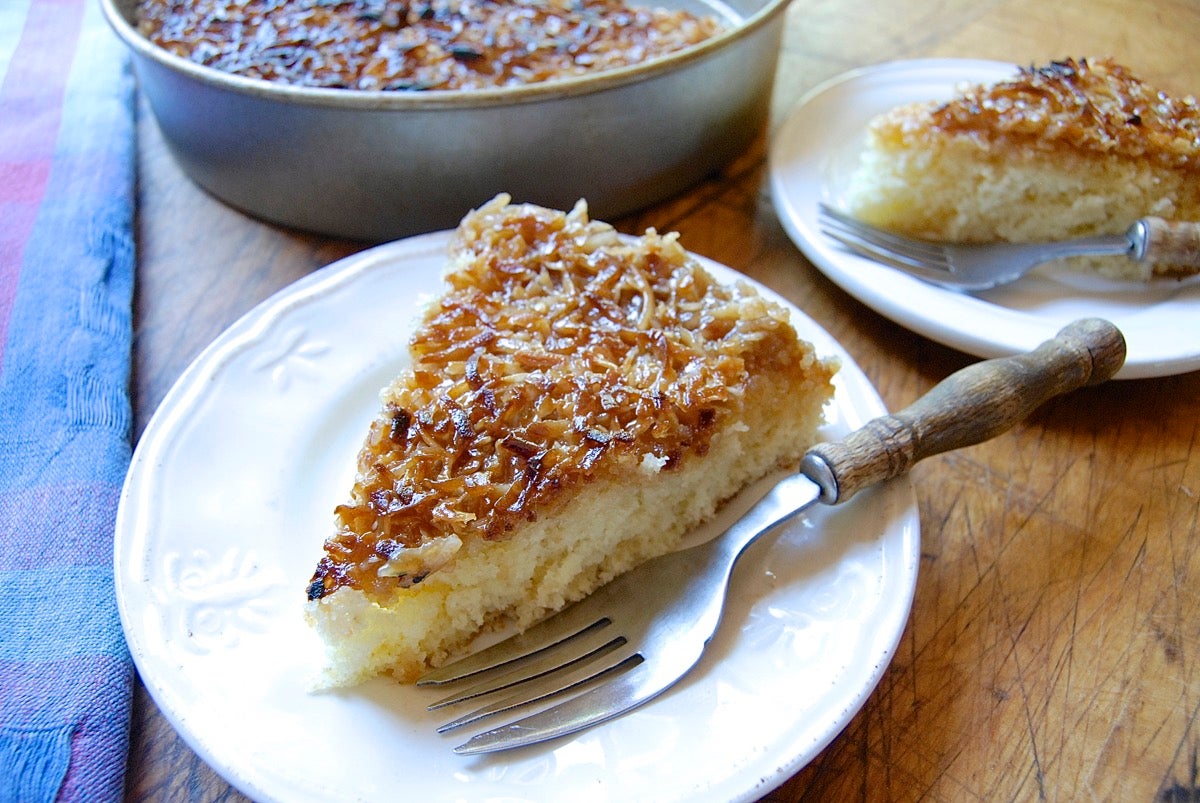
This is the first recipe I ever baked on my own. As a 14-year-old holding down my first Saturday job, I felt EXTREMELY grown up when my boss, noticing me admiring a slice of cake she'd brought for lunch, hand-printed this recipe on a 3" x 5" card (remember those?) and gave it to me.
I felt even more grown up when I got out my mom's electric beater, her favorite bowl, found all the ingredients, and baked a perfectly wonderful cake. In fact, I think it might be this cake that first hooked me on baking.
Let's see how it does with self-rising flour. It's an old-fashioned hot milk cake, calling for 1 teaspoon baking powder and 1 cup of flour: that's 1 teaspoon baking powder per cup of flour, double the minimum.
Will the self-rising flour have enough leavening power?
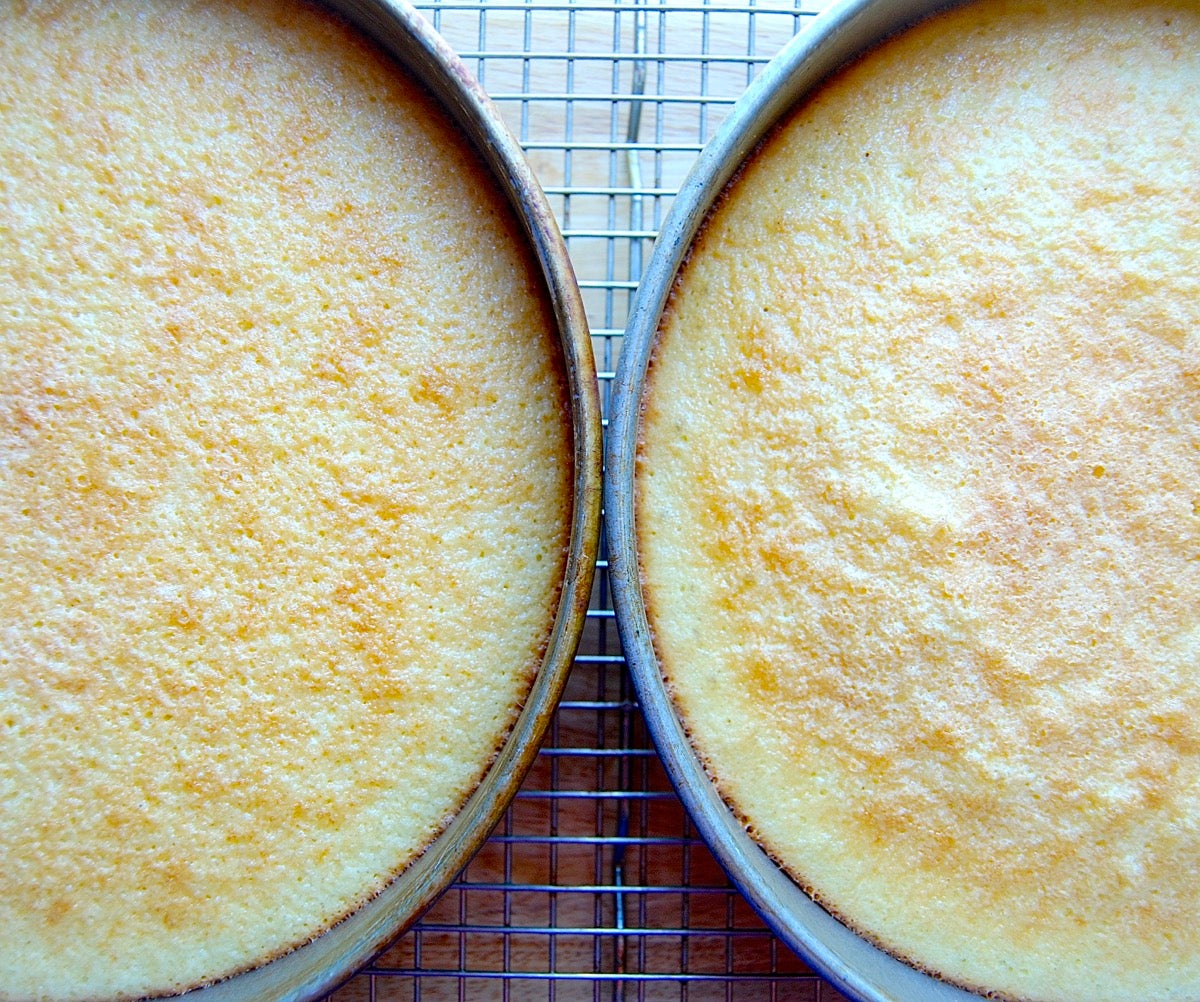
Absolutely. That's all-purpose flour on the left, self-rising on the right. They look exactly the same.
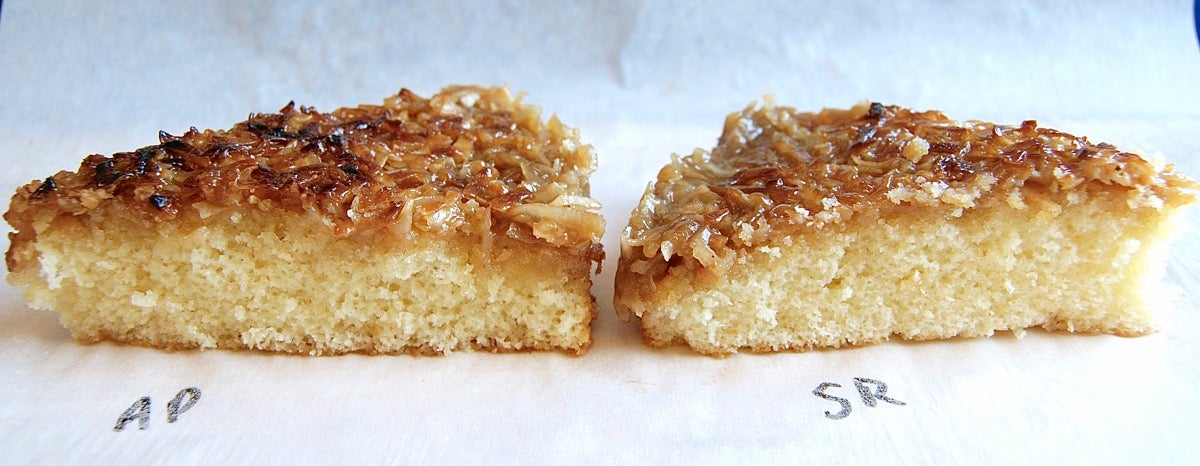
Once cut, it appears the all-purpose flour cake may have risen a bit more evenly; but that also might be just a simple aberration. Both have a lovely crumb.
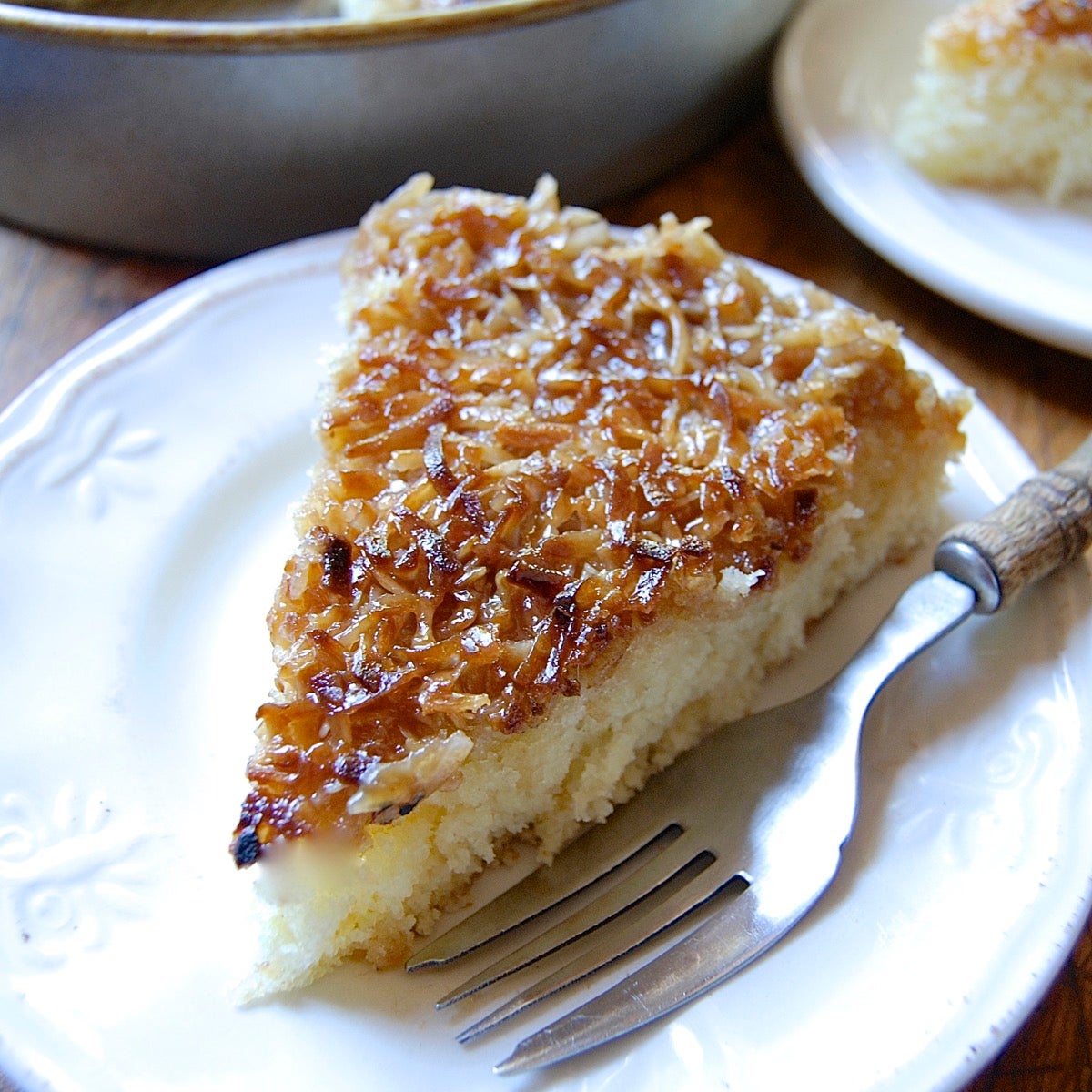
And both versions, with their broiled brown sugar/coconut topping, taste just as I remember from junior-high days: superb.
Hot milk cake: check.
Now, what about recipes that include both baking powder and baking soda? Or only baking soda – no baking powder?
For recipes with both leaveners, include the baking soda just as you would if you were using all-purpose flour.
For recipes using baking soda, but no baking powder – well, you're on your own. I can tell you that as far as leavening power goes, 1 teaspoon of baking powder is approximately equivalent to 1/4 teaspoon of baking soda. I leave any further recipe math up to you!

